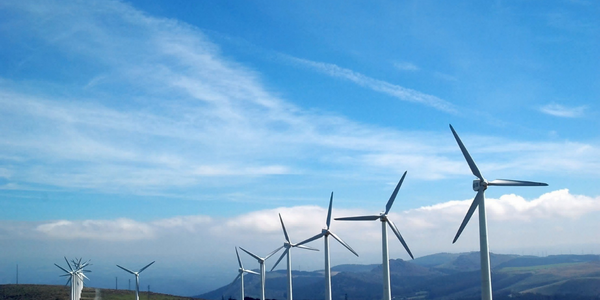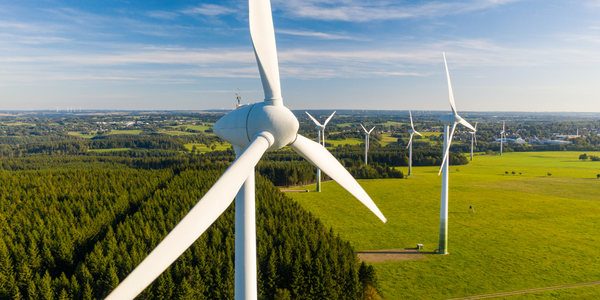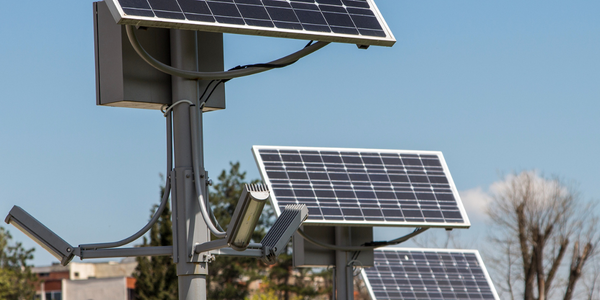Customer Company Size
Mid-size Company
Region
- Europe
Country
- Spain
Product
- DocuWare
Tech Stack
- Cloud-based network folder
- ERP system
Implementation Scale
- Enterprise-wide Deployment
Impact Metrics
- Productivity Improvements
- Cost Savings
Technology Category
- Infrastructure as a Service (IaaS) - Cloud Computing
Applicable Industries
- Renewable Energy
Applicable Functions
- Human Resources
Services
- Cloud Planning, Design & Implementation Services
About The Customer
The Rotonda Group is a conglomerate of around 70 individual companies and employs over 500 people. The group operates over 100 casinos and betting halls in five Spanish regions under its best-known brands, Magna and Emotiva.net. Besides the entertainment industry, the company is also involved in renewable energies, agriculture, telecommunications, energy, and real estate. In recent years, the company has increasingly focused on digital transformation to automate a wide range of accounting and HR processes.
The Challenge
Before the introduction of the Document Management System (DMS), Rotonda Group was heavily reliant on paper-based processes and manual work. The company receives over 120,000 delivery bills annually, all of which were collected and sent to the headquarters once a month by courier. This led to considerable additional work and often resulted in delays and inconsistencies in invoice approval and storage. The administrative staff had to process a large number of documents at once, which was inefficient and time-consuming. As part of their digital transformation, Rotonda decided to implement a DMS to streamline these processes.
The Solution
Rotonda Group implemented DocuWare, a Document Management System (DMS), to automate many of their previously manual processes. All branches were equipped with their own scanners, and the digitized delivery bills were first transmitted to a cloud-based network folder, then indexed and stored by DocuWare. The company now mainly receives its 45,000 supplier invoices per year electronically. DocuWare monitors the company’s mailboxes and automatically archives new incoming invoices. If the documents contain a delivery reference, the solution even creates a link between the invoice and the delivery bill. This increases security in the subsequent approval process, as invoice items can be compared to actually delivered goods with a simple mouse click. In the human resources area, new employment contracts are signed only digitally thanks to DocuWare. In the first step, the new employee simply fills out a web-based form from home. The data is then automatically transferred to the administration software to create the employment contract. In the final step, DocuWare delivers the contract to be signed, to the new hire by e-mail – the digital signature is applied through an integrated signature service.
Operational Impact

Case Study missing?
Start adding your own!
Register with your work email and create a new case study profile for your business.
Related Case Studies.

Case Study
Remote Monitoring & Predictive Maintenance App for a Solar Energy System
The maintenance & tracking of various modules was an overhead for the customer due to the huge labor costs involved. Being an advanced solar solutions provider, they wanted to ensure early detection of issues and provide the best-in-class customer experience. Hence they wanted to automate the whole process.

Case Study
Vestas: Turning Climate into Capital with Big Data
Making wind a reliable source of energy depends greatly on the placement of the wind turbines used to produce electricity. Turbulence is a significant factor as it strains turbine components, making them more likely to fail. Vestas wanted to pinpoint the optimal location for wind turbines to maximize power generation and reduce energy costs.

Case Study
Siemens Wind Power
Wind provides clean, renewable energy. The core concept is simple: wind turbines spin blades to generate power. However, today's systems are anything but simple. Modern wind turbines have blades that sweep a 120 meter circle, cost more than 1 million dollars and generate multiple megawatts of power. Each turbine may include up to 1,000 sensors and actuators – integrating strain gages, bearing monitors and power conditioning technology. The turbine can control blade speed and power generation by altering the blade pitch and power extraction. Controlling the turbine is a sophisticated job requiring many cooperating processors closing high-speed loops and implementing intelligent monitoring and optimization algorithms. But the real challenge is integrating these turbines so that they work together. A wind farm may include hundreds of turbines. They are often installed in difficult-to-access locations at sea. The farm must implement a fundamentally and truly distributed control system. Like all power systems, the goal of the farm is to match generation to load. A farm with hundreds of turbines must optimize that load by balancing the loading and generation across a wide geography. Wind, of course, is dynamic. Almost every picture of a wind farm shows a calm sea and a setting sun. But things get challenging when a storm goes through the wind farm. In a storm, the control system must decide how to take energy out of gusts to generate constant power. It must intelligently balance load across many turbines. And a critical consideration is the loading and potential damage to a half-billion-dollar installed asset. This is no environment for a slow or undependable control system. Reliability and performance are crucial.

Case Study
Remote Monitoring and Control for a Windmill Generator
As concerns over global warming continue to grow, green technologies are becoming increasingly popular. Wind turbine companies provide an excellent alternative to burning fossil fuels by harnessing kinetic energy from the wind and converting it into electricity. A typical wind farm may include over 80 wind turbines so efficient and reliable networks to manage and control these installations are imperative. Each wind turbine includes a generator and a variety of serial components such as a water cooler, high voltage transformer, ultrasonic wind sensors, yaw gear, blade bearing, pitch cylinder, and hub controller. All of these components are controlled by a PLC and communicate with the ground host. Due to the total integration of these devices into an Ethernet network, one of our customers in the wind turbine industry needed a serial-to-Ethernet solution that can operate reliably for years without interruption.

Case Study
Temperature monitoring for vaccine fridges
Dulas wanted a way to improve the reliability of the cold chain, facilitating maintenance and ensuring fewer vaccines are spoiled. Dulas wanted an M2M solution which would enable them to record and report the temperature inside vaccine refrigerators.

Case Study
IoT Powering A New Way to Light Streets with Bifacial Solar Panels
When James Meringer’s commercial contracting business experienced a rapid increase in solar projects, he also saw an opportunity to extend the benefits of solar by using the bifacial solar panels he’d become familiar with in new ways. Bifacial solar panels enable sunlight from both sides of the panel, making it a more efficient harvest of solar power. Seeing the panel’s power, James and his team set out to use the same technology for street lighting. Until now, solar street lights have served as utilitarian solutions that force designers to choose between form and function. The Mira Bella Energy team has changed that.







